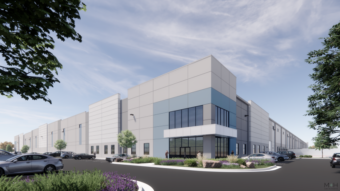Anyone involved in the real estate world has heard about the dramatic uptick in pricing on raw construction materials in the last year. With lumber worth its weight in gold, there had actually been recent reports of thefts at job sites as criminals look to cash in on the extraordinary prices in recent months. However, there has also been a steady stream of reports indicating that the lumber price bubble is finally bursting and coming back to earth as inventory shortages ease up. But the dramatic cost increases have been felt across the board as other materials such as steel, drywall, copper and glazing have all seen a bolster in demand and pricing.
So how much have these raw materials really increased this year? A couple of different reports offer more insight. A recent report from Colliers, with data for some materials as recent as May, shows double-digit gains in everything listed except plumbing cast iron. Wood materials is certainly one of the most extreme situations, where Colliers pegs the increase in price by 56% over the three months between January and March/April. Metal drywall studs has also seen an exponential uptick in price, going up a whopping 70% between January and March/April.

More importantly, the increased costs on materials has had an impact on construction and financing for new projects. The Colliers report estimates that the higher prices on structural steel can increase the cost of a new development by nearly 4%. And then of course plumbing budgets, HVAC budgets and so on are also being affected by a wide margin, but then there’s also delays in the pipeline, meaning that builders have to also deal with much longer lead times for materials.
A separate report from Chicago-based construction company Skender also goes into detail on the rising costs of materials and what it means to everyone from developers to end users. The increased costs and lead times for materials may have a negative impact on the country’s economic recovery as cities and states fully reopen from the protracted pandemic shut downs. And there’s an expectation that the supply shortages and price increases may change the way that builders approach their procurement operations going forward.
To mitigate risk and keep projects on track, Skender offers a few solutions to current supply chain and cost issues. One is to accelerate the schedule early and have teams collaborate much earlier in the process. But then there’s also the theme or recommendation to also order and procure materials earlier to not only address supply shortages, but to also try and keep overall project cost estimates in real time as close as possible. Another suggestion is to expand the material mix and browse the broader menu of construction materials for substitutes. And finally, one that will remain important moving forward is the idea of setting a strategy reserve and reinvestment plan in order to keep the budget flexible in this period of economic uncertainty and cost volatility.





